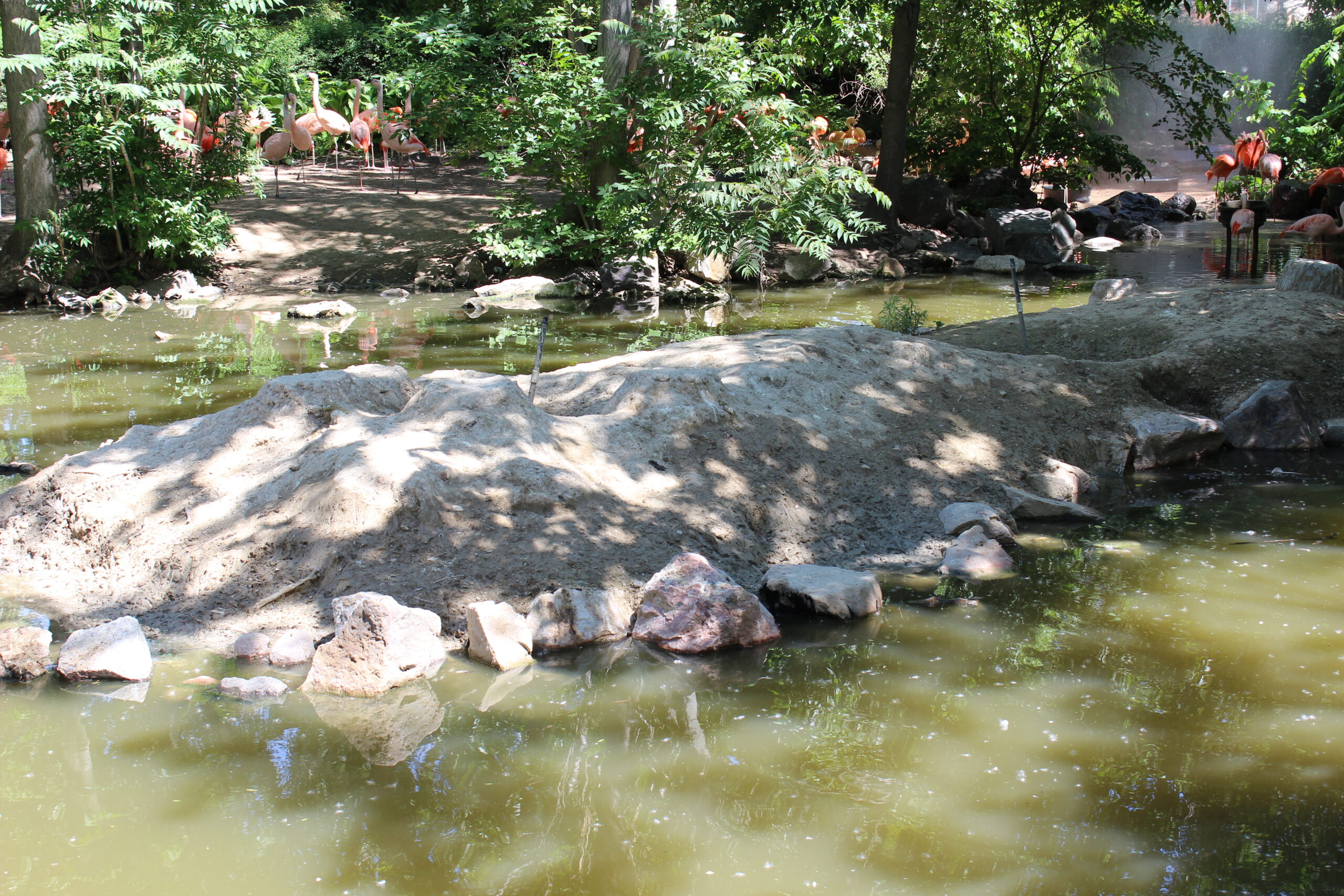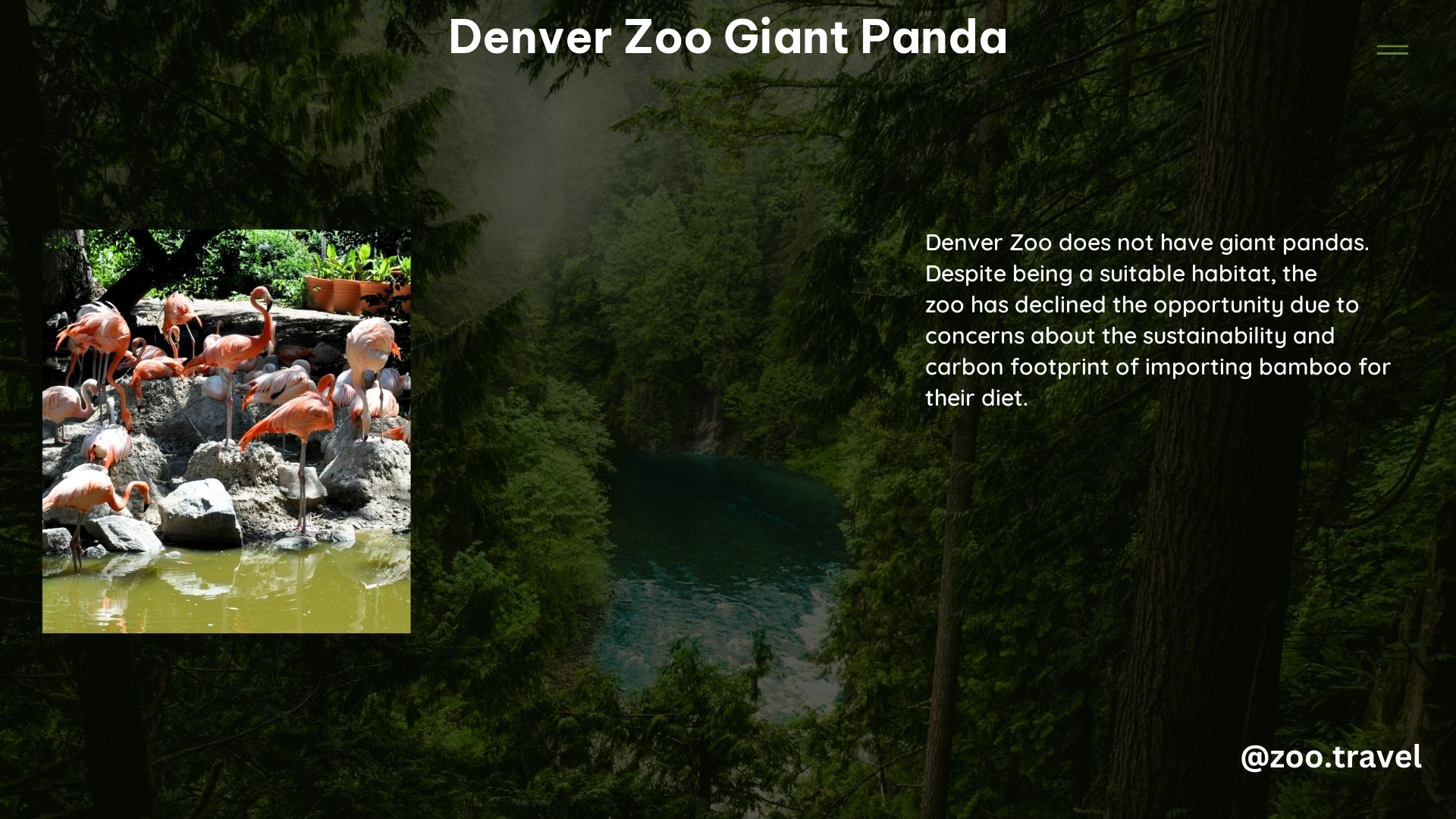The Denver Zoo is a renowned zoological park that boasts an impressive collection of diverse animal species. However, one animal that is notably absent from their exhibits is the giant panda. While the zoo does not currently have giant pandas on display, there are still many fascinating aspects to explore about these captivating creatures and their potential future at the Denver Zoo.
Understanding the Absence of Giant Pandas at Denver Zoo

The Denver Zoo’s decision to not have giant pandas on exhibit is primarily due to the significant challenges and costs associated with their care and maintenance. Giant pandas are highly specialized animals with unique dietary and environmental requirements that can be difficult and expensive to accommodate.
Dietary Needs of Giant Pandas
Giant pandas are primarily herbivorous, with a diet that consists almost exclusively of bamboo. This specialized diet requires a substantial amount of bamboo to be imported and maintained at the zoo, which can be a logistical and financial burden. The Denver Zoo would need to ensure a reliable and consistent supply of high-quality bamboo to meet the dietary needs of any giant pandas in their care.
Habitat Requirements
In addition to their dietary needs, giant pandas also have specific habitat requirements that can be challenging to replicate in a zoo setting. These animals require large, forested enclosures with ample space to roam and climb. The Denver Zoo would need to dedicate a significant amount of land and resources to create an environment that closely mimics the natural habitat of the giant panda.
Carbon Footprint and Sustainability
Another factor that the Denver Zoo must consider is the environmental impact of housing giant pandas. These animals have a relatively high carbon footprint due to their specialized dietary needs and the energy required to maintain their habitat. The Denver Zoo is committed to sustainability and reducing its environmental impact, which may make the addition of giant pandas a difficult decision.
The Challenges of Acquiring and Caring for Giant Pandas

Acquiring giant pandas for a zoo can be a complex and expensive process. These animals are considered national treasures in their native China, and the Chinese government closely regulates their distribution to zoos around the world. Zoos that wish to host giant pandas must negotiate with the Chinese government and pay substantial fees, which can be a significant financial burden.
Breeding and Reproduction
In addition to the initial acquisition costs, zoos must also invest significant resources into the breeding and reproduction of giant pandas. These animals have notoriously low birth rates and can be challenging to breed in captivity. The Denver Zoo would need to have a dedicated team of experts and specialized facilities to support the successful breeding and rearing of giant pandas.
Veterinary Care and Research
Caring for giant pandas also requires specialized veterinary care and ongoing research. These animals are susceptible to a variety of health issues, and their unique physiology and behavior can present challenges for veterinary professionals. The Denver Zoo would need to invest in specialized training and equipment to ensure the well-being of any giant pandas in their care.
The Potential for Giant Pandas at Denver Zoo
While the Denver Zoo does not currently have giant pandas on exhibit, there is always the possibility that this could change in the future. The zoo’s commitment to conservation and education could make them an attractive partner for hosting these iconic animals.
Collaboration with Chinese Authorities
One potential avenue for the Denver Zoo to acquire giant pandas would be through collaboration with the Chinese government. As the primary custodians of giant pandas, the Chinese government works with zoos around the world to facilitate the loan or exchange of these animals. The Denver Zoo could explore opportunities to partner with Chinese authorities and secure the necessary permits and resources to host giant pandas.
Fundraising and Sponsorship
Hosting giant pandas can also be a significant financial undertaking for a zoo. The Denver Zoo would need to secure substantial funding and sponsorship to cover the costs of acquiring, housing, and caring for these animals. This could involve seeking grants, corporate partnerships, and public donations to support the establishment of a giant panda exhibit.
Educational and Conservation Opportunities
The addition of giant pandas to the Denver Zoo’s collection could also provide valuable educational and conservation opportunities. These animals are beloved worldwide and can serve as ambassadors for their species, raising awareness about the importance of habitat conservation and environmental stewardship. The Denver Zoo could leverage the presence of giant pandas to engage visitors, promote conservation efforts, and inspire the next generation of wildlife enthusiasts.
Conclusion
While the Denver Zoo does not currently have giant pandas on exhibit, the potential for these captivating creatures to join the zoo’s collection in the future remains a possibility. The challenges of acquiring and caring for giant pandas are significant, but the Denver Zoo’s commitment to conservation and education could make them an attractive partner for hosting these iconic animals. As the zoo continues to evolve and expand its offerings, the prospect of a giant panda exhibit at the Denver Zoo remains a tantalizing possibility for zoo enthusiasts and wildlife lovers alike.
Reference:
– Giant Panda Conservation
– Denver Zoo’s Animal Collection
– Challenges of Keeping Giant Pandas in Captivity
